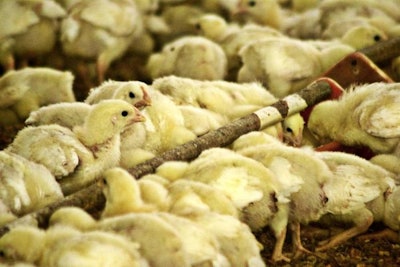
With the Great Recession, two major feed cost shocks and an outbreak of highly pathogenic avian influenza – which did more to disrupt trade than production capabilities – all becoming more distant memories, hardship and frustration are giving way to swelling optimism in the U.S. broiler industry.
Good reason for optimism
Profit margins in the U.S. broiler industry were strong in 2017 and money pouring into the sector in recent years set off a wave of investment. The resulting boost to capacity means we expect U.S. broiler production will increase to 43.2 billion pounds ready-to-cook (RTC) in 2018, up about 4 percent from 41.7 billion pounds RTC in 2017.
Optimists correctly point out that global demand for meat and protein is improving – creating opportunities to export surplus output – and that even domestic demand inspires far more confidence now than it did six or seven years ago. This argument perhaps underestimates the magnitude of current expansion efforts, especially as we take a step back and examine the broader meat and poultry space.
Total red meat and poultry production in the U.S. is expected to increase 4 percent overall in 2018, to 103.0 billion pounds carcass weight from 99.3 billion pounds in 2017. The U.S. pork industry is leading the charge on the growth front with beef and chicken not far behind.

Domestic meat consumption is rising since 2014, but chicken is steadily gaining a lead on competing proteins.
Global context for the U.S. industry
Supply developments in the U.S. must also be placed into the context of global trends. Internationally, red meat and poultry production is also expanding quickly, helping to meet local demand growth and ostensibly limiting potential U.S. exports.
The combined effects of export growth and an increasing population aren’t likely to be enough to keep pace with increasing U.S. red meat and poultry production in 2018. Consequently, domestic per capita disappearance of all red meat and poultry in the U.S. is forecast to increase more than 2 percent overall in 2018 to 182.8 pounds boneless weight from 178.8 pounds in 2017.
Conclusions
This coordinated expansion effort is expected to leave per capita disappearance of all red meat and poultry near record levels in 2018 and right in line with a pattern observed between 2002 and 2007. So, in a broader sense, we’ve been here before. However, the U.S. broiler industry is looking at record per capita disappearance of chicken at 66.6 pounds boneless weight basis, an increase of more than 3 percent from the 64.6 pounds available per person in 2017.
Record chicken supplies and near-record total meat and poultry supplies in the U.S. don’t automatically spell doom. But the margin for error is arguably much smaller for the broiler industry now than it was in prior years. The industry should be somewhat concerned that production volumes are expanding at a pace above and beyond what can be absorbed through exports and population growth.
If we don’t see expansion efforts easing soon, or we’re unable to tap into unrealized export prospects, the total meat and poultry supply situation will be poised to move into uncharted territory in 2019. The U.S. broiler industry is already vulnerable to a surprise event – namely a recession or sudden feed cost spike – but given current growth trends, early signs of trouble could be brewing for the sector even without an outside shock to the system.

















